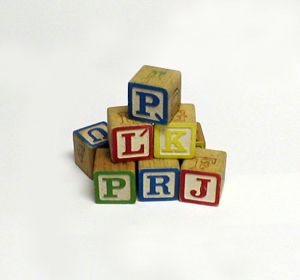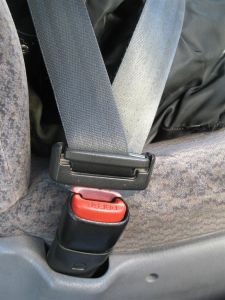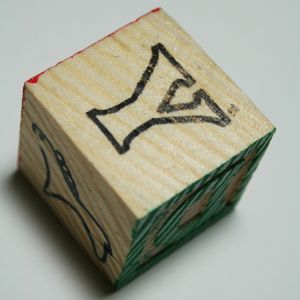By Steven Smith, Attorney and David Wolf, Attorney
Published by Child Injury Lawyer Network
 New York day care and child care centers are regulated by the New York Office of Children and Family Services. Pursuant to Section 418-1.5, Safety of the New York Codes, Rules and Regulations (NYCRR), child care centers must have railings from the floor or ground to prevent children from falling off of porches, stairs, and decks. In addition, child care centers must provide and maintain barriers to keep children out of and away from unsafe and dangerous area. In particular, a child care center must have barriers in place in areas where there is a swimming pool, drainage ditch, well, hole, wood / coal burning stove, fireplace, and gas heater.
New York day care and child care centers are regulated by the New York Office of Children and Family Services. Pursuant to Section 418-1.5, Safety of the New York Codes, Rules and Regulations (NYCRR), child care centers must have railings from the floor or ground to prevent children from falling off of porches, stairs, and decks. In addition, child care centers must provide and maintain barriers to keep children out of and away from unsafe and dangerous area. In particular, a child care center must have barriers in place in areas where there is a swimming pool, drainage ditch, well, hole, wood / coal burning stove, fireplace, and gas heater.
 Child Injury Lawyer Blog
Child Injury Lawyer Blog


 Chuck E Cheese is a popular place for kid birthday parties and for pizza. The pizza is not the greatest of quality but edible nonetheless. Chuck E Cheese caters to children with arcade games, music, and an inside play area. Children and parents receive hand stamps upon entry as a measure to deter the abduction of children from the site. Some children misbehave at Chuck E Cheese. In some instances, it is the adults who misbehave. In Manheim Township / Fruitville Pike Pennsylvania, it was reported that two man got into a fight over an arcade game that resulted in medical care and hospitalization. There have been other reported incidents at Chuck E Cheese in Pennsylvania and other States.
Chuck E Cheese is a popular place for kid birthday parties and for pizza. The pizza is not the greatest of quality but edible nonetheless. Chuck E Cheese caters to children with arcade games, music, and an inside play area. Children and parents receive hand stamps upon entry as a measure to deter the abduction of children from the site. Some children misbehave at Chuck E Cheese. In some instances, it is the adults who misbehave. In Manheim Township / Fruitville Pike Pennsylvania, it was reported that two man got into a fight over an arcade game that resulted in medical care and hospitalization. There have been other reported incidents at Chuck E Cheese in Pennsylvania and other States. A medical / environmental study has reported that children in Washington D.C. were exposed to high levels of lead during a water crisis involving the city water system. Apparently, there was a high level of lead in the city’s tap water which began in 2001. It is estimated that 42,000 Washington D.C. children, who now range from the age of 4 to 9, might be at risk for health and behavioral problems associated with high lead exposure. Lead levels began rising in 2001 and were not corrected or improved upon until the issue was publicized by the Washington Post in 2004.
A medical / environmental study has reported that children in Washington D.C. were exposed to high levels of lead during a water crisis involving the city water system. Apparently, there was a high level of lead in the city’s tap water which began in 2001. It is estimated that 42,000 Washington D.C. children, who now range from the age of 4 to 9, might be at risk for health and behavioral problems associated with high lead exposure. Lead levels began rising in 2001 and were not corrected or improved upon until the issue was publicized by the Washington Post in 2004. In Ohio child day care centers, children suffer personal injuries every day while participating in outdoor / playground play or indoor play. Many of these child injuries could be prevented with better and more diligent supervision by child care workers and with better and more timely maintenance of playground equipment and toys. In some instances, the playground equipment or toy is inappropriate for the child’s age group, size, and maturity. For instance, raised platforms with no protective railings or sides would be inappropriate for infants and toddler who have poor balance and safety awareness. Toys with small removable parts or broken toys would also be inappropriate for this age group.
In Ohio child day care centers, children suffer personal injuries every day while participating in outdoor / playground play or indoor play. Many of these child injuries could be prevented with better and more diligent supervision by child care workers and with better and more timely maintenance of playground equipment and toys. In some instances, the playground equipment or toy is inappropriate for the child’s age group, size, and maturity. For instance, raised platforms with no protective railings or sides would be inappropriate for infants and toddler who have poor balance and safety awareness. Toys with small removable parts or broken toys would also be inappropriate for this age group. Missouri day care / child care caregivers in the State of Missouri. According to 19 Code of State Regulations 30.60.070, Responsibilities of Caregivers, the following responsibilities apply to caregivers:
Missouri day care / child care caregivers in the State of Missouri. According to 19 Code of State Regulations 30.60.070, Responsibilities of Caregivers, the following responsibilities apply to caregivers: The United States Centers for Disease Control and Prevention (Washington D.C.) reports that half of the victims of salmonella poisoning from peanut butter have been children. So far, there have been approximately 500 reported incidents of salmonella poisoning linked to peanut butter across the United States.
The United States Centers for Disease Control and Prevention (Washington D.C.) reports that half of the victims of salmonella poisoning from peanut butter have been children. So far, there have been approximately 500 reported incidents of salmonella poisoning linked to peanut butter across the United States.
 In a bill introduced in the Georgia State Senate on January 15, 2009, the failure to wear a seatbelt would be considered as evidence against a plaintiff in a lawsuit arising out of an automobile accident. Under this bill, the failure of a plaintiff to wear a seatbelt in violation of Georgia’s seat belt law could be considered as evidence of the plaintiff’s own negligence or contributory negligence. Such a bill will give the at fault driver a chance to point the finger back at the plaintiff, saying to the plaintiff “Yes, I might be at fault but so were you in not wearing a seat belt.” In Georgia, the injured victim could be an innocent child passenger who failed to fasten his or her seatbelt and suffered injuries in a car accident through no fault of his or her own.
In a bill introduced in the Georgia State Senate on January 15, 2009, the failure to wear a seatbelt would be considered as evidence against a plaintiff in a lawsuit arising out of an automobile accident. Under this bill, the failure of a plaintiff to wear a seatbelt in violation of Georgia’s seat belt law could be considered as evidence of the plaintiff’s own negligence or contributory negligence. Such a bill will give the at fault driver a chance to point the finger back at the plaintiff, saying to the plaintiff “Yes, I might be at fault but so were you in not wearing a seat belt.” In Georgia, the injured victim could be an innocent child passenger who failed to fasten his or her seatbelt and suffered injuries in a car accident through no fault of his or her own. In Massachusetts, each child care licensee (owner / operator) must maintain records of training opportunities provided to or available for staff members. Training is vital for all child care providers so that each child is provided with a safe day care environment. The State of Massachusetts Department of Early Childhood Education pursuant to
In Massachusetts, each child care licensee (owner / operator) must maintain records of training opportunities provided to or available for staff members. Training is vital for all child care providers so that each child is provided with a safe day care environment. The State of Massachusetts Department of Early Childhood Education pursuant to  Before selecting a day care center for your child in Georgia and other States, it makes sense to do some research into the facility. Visit the facility and ask a lot of questions. Visit more than once if you like. See if you can speak to other parents with children in the program. Another great resource of information is the State of Georgia Office Website for the Department of Human Resources where you can access a database called the
Before selecting a day care center for your child in Georgia and other States, it makes sense to do some research into the facility. Visit the facility and ask a lot of questions. Visit more than once if you like. See if you can speak to other parents with children in the program. Another great resource of information is the State of Georgia Office Website for the Department of Human Resources where you can access a database called the